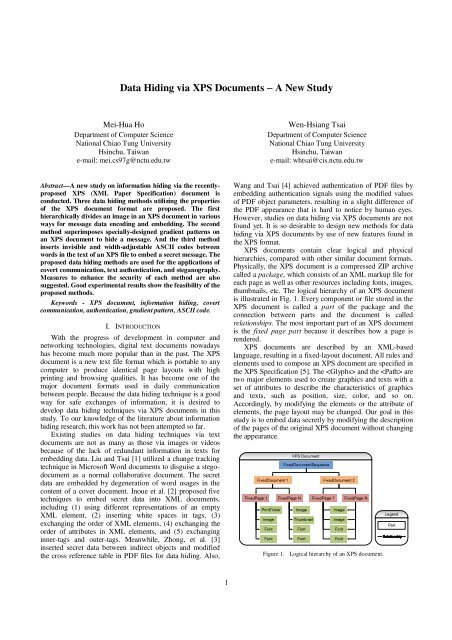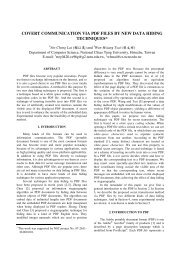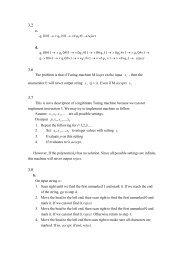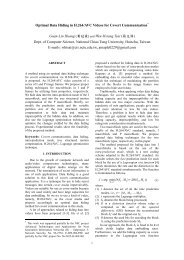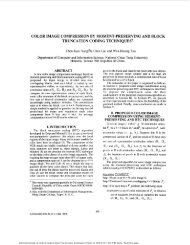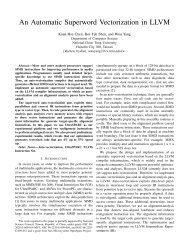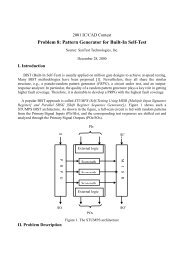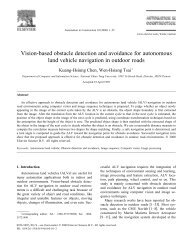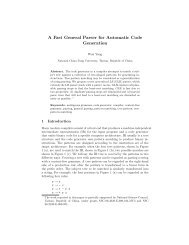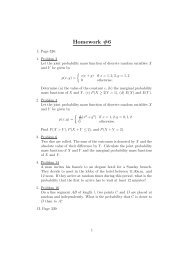Data Hiding via XPS Documents â A New Study
Data Hiding via XPS Documents â A New Study
Data Hiding via XPS Documents â A New Study
- TAGS
- documents
You also want an ePaper? Increase the reach of your titles
YUMPU automatically turns print PDFs into web optimized ePapers that Google loves.
secret message has been modified, we still can extract themessage correctly. Moreover, we may use additionally thedocument authentication method (Algorithms 3 and 4) toprotect not only the contents of <strong>XPS</strong> document but also thecontents of the secret message. More specifically, we maytransform the secret message into corresponding gradientpatterns as authentication signals and superimpose them onthe <strong>XPS</strong> document. The positions where these gradientpatterns are superimposed can be determined by the user key.As a result, we may decide whether the secret message hasbeen tampered with or not by the authentication signalverification process described by Algorithm 4.(a)(b)Figure 9. <strong>Data</strong> extraction from stego-document. (a) Extraction resultusing right key. (b) Extraction result using wrong key.V. CONCLUSIONIn this study, we investigate the new problem ofinformation hiding <strong>via</strong> <strong>XPS</strong> documents and proposed threenew data hiding techniques for different applications. First,a data hiding method for covert communication based on thenovel use of a division pattern encoding table to encode thesecret message has been proposed. Also, to verify theintegrity and fidelity of the text contents of <strong>XPS</strong> documents,an authentication method based on a data hiding techniquehas been proposed, which generates variable gradientpatterns as authentication signals and superimpose themonto an <strong>XPS</strong> document invisibly. Finally, a data hidingmethod using width-adjustable invisible ASCII codes in the<strong>XPS</strong> document has been proposed for the application ofsteganography, in which a secret message is encoded bycertain invisible ASCII codes found in this study andembedded into between-word spaces by adjusting theiradvance widths to be zero. Moreover, measures to enhancethe security of each proposed method have also beensuggested. The experimental results show the feasibility ofthe proposed methods and the appearance of the <strong>XPS</strong>document is totally unaffected after the proposed methodshave been applied. Future studies may be directed toinvestigating more features of the <strong>XPS</strong> documentspecification and designing accordingly more data hidingmethods for information hiding applications.REFERENCES[1] T. Y. Liu and W. H. Tsai, “A new steganographicmethod for data hiding in Microsoft Word documentsby a change tracking technique,” IEEE Transactions onInformation Forensics and Security, vol. 2, no. 1, pp.24-30, March 2007.[2] S. Inoue, K. Makino, I. Murase, O. Takizawa, T.Matsumoto, and H. Nakagawa. “Proposal oninformation hiding method using XML,” Proceedingsof 1st NLP and XML Workshop, Tokyo, Japan, Nov.2001.[3] S. Zhong, X. Cheng, and T. Chen, “Informationsteganography algorithm based on PDF documents,”Computer. Engineering, vol. 32, no. 3, pp. 161-163,Feb. 2006.[4] C. T. Wang and W. H. Tsai, “<strong>Data</strong> hiding in PDF filesand applications by imperceivable modifications ofPDF object parameters,” Proceedings of 2008Conference on Computer Vision, Graphics and ImageProcessing, Ilan, Taiwan, Aug. 2008.[5] Microsoft Co., XML Paper Specification, Version 1.0,Oct. 2006.8


